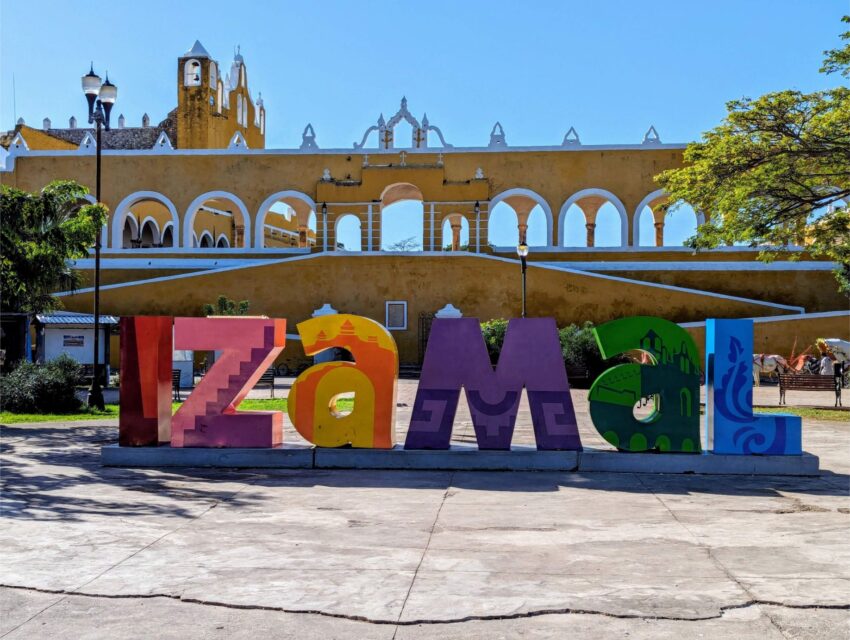
Exploring Izamal: Our Cheap Bus Trip to the Yellow City
We just returned from a successful day trip to Izamal, one of the “pueblos magicos” (= magical towns) in the Yucatan state of Mexico. Izamal is a popular place, visited by travelers for its impressive colonial architecture, archaeological zones, and famously yellow painted buildings.
We had a wonderful time!
Izamal far exceeded our expectations, so we wanted to report on how we got there from our home base in Merida and what we did once we got there. It was the perfect place to spend the day, and we didn’t break the bank either.
So let us show you what we did and how we did it!
Why Visit Izamal?
Located 72 kilometers east of Merida, Izamal is a beautiful colonial town founded in the mid-16th century on the remains of an ancient Mayan city. There are numerous Mayan temples, as well as colonial-era houses from the 16th, 17th, and 18th centuries, all integrated into the town.
Most of Izamal’s historic buildings and houses are painted yellow and white, which provokes an image of elegance and charm. Interspersed among the buildings are Mayan archaeological sites, with large pyramids that dominate the town center.
For those interested in the extended history of Izamal, you can read all about it HERE.
This town is perfect for exploring on foot. We spent the day wandering the streets, enjoying the central parks and plazas, eating at the central market, admiring the unique colonial-era architecture and convent, and visiting FOUR different Mayan archaeological zones.
All in one day!
Bottom line, there is a lot to do in Izamal. And much of it is free!
How Did We Get to Izamal from Merida?
At first, this was a difficult thing to figure out. The problem is that there is very little information online in English on how to get to Izamal without doing it as part of an expensive tour!
Thankfully, after considerable digging, we found references to local buses that made regular trips to Izamal from the Noreste Bus Station near the Centro Historico region of Merida.
This presented another problem – Noreste Bus Station doesn’t post its complete bus schedule online!
So in this kind of situation, the only thing you can do is visit Noreste Bus Station and ask directly. So we did!
When we entered the station, the first thing we saw were three large panels above the ticket windows showing the destinations, schedules, and prices for ALL the buses departing Merida from Noreste Bus Station:

We saw that there were a bunch of morning departures for Izamal, and we agreed that a 7 am departure the next day (Wednesday) would be best considering it reportedly takes about 90 minutes to get there. That way we’d be able to spend a few early morning hours with the town largely to ourselves!
So we approached the ticket counter and asked (in Spanish) for tickets to Izamal. One-way tickets were $35 MEX ($2.05 USD) each (CASH ONLY), and the Oriente bus line serviced the route.
The fare is applied to a rechargeable AhorroBUS card that the driver scans when you get on the bus. If you don’t have an AhorroBUS card of your own, one costs $10 MEX ($0.59 USD) and can be used for multiple people.
We were also given a pink receipt to verify our fare, which you should keep just in case something goes wrong during the boarding process.

Note that you are not given seat assignments during the ticketing process. Seats are first come first served, so it is best to show up 30 minutes before bus departure to make sure you can get a seat!
But admittedly, at 7 am we weren’t all that worried.
Last, RETURN trips to Merida from Izamal are not handled at Noreste Bus Station. We were told to purchase those fares at the station in Izamal. But the ticket window attendants will tell you what the return trip times are so you can plan accordingly.
So bright and early the next morning, we walked from our Airbnb in Merida to Noreste Bus Station, arriving at 6:30 am so we would have plenty of time to get in line for our seats.
After arriving at Noreste Bus Station, we asked an attendant where we should wait for our bus (there are two waiting areas) and we were directed into a large terminal area with seats and bathrooms.
There were no issues.
Eventually, an Oriente bus with an Izamal LED sign arrived at around 7:00 am, and we immediately boarded. The driver scanned our AhorroBUS card, gave us a receipt, and we got seats. At 7 am, the bus wasn’t more than half full, so the whole process was easy.
The bus was quite modern! The seats were comfortable and could recline. Suitcases can be stowed in the cargo bay, should you have luggage. The bus also had AC and USB-A charging outlets above each seat, which were nice touches.
Our ride to Izamal was smooth, stopping in several towns to pick up and drop off passengers. We arrived at Izamal Oriente Bus Station at around 8:30 am without any problems.
Izamal Oriente Bus Station is a cute little bus station with a ticket window servicing only a few destinations.
We immediately noted the bus timetable back to Merida and bought fares for a 3:30 pm return. Like before, fares (CASH ONLY) were $35 MEX ($2.05 USD) each and were applied to our AhorroBUS card.

Getting Oriented
After departing the station, we walked to what appeared to be a park area, which ended up being Izamal Centro park.
We picked up a couple of coffees at the nearby hotel cafe ($40 MEX/$2.34 USD each), sat on the park benches, and caffeinated ourselves.
And while we did so we plotted our plan of attack for the day, using Google Maps. Izamal is small and extremely walkable, so if you are hiking fit you don’t need to worry about hiring taxis to get you around.
We decided to check out the nearby Plaza Centro, then the historic Convento de San Antonio de Padua, and then visit as many of the archaeological zones as we could!
And of course, we would fit in lunch, ideally somewhere cheap and tasty.
Wandering the Streets of Izamal
It is no exaggeration to say that Izamal is one of the most charming towns we have ever visited in our Latin American travels. This place is oozing with character, stemming from the well-maintained Spanish colonial buildings, and the thematic yellow and white paint that covers them.
It doesn’t matter what streets you go down. There are pretty sights to see wherever you go!
Here are some of our favorite images.
Plaza Izamal
When we started our explorations, we first decided to head to Pirámide Kinich Kakmó. The lighting was perfect for photography and the temperatures were cool for the pyramid climb!
But on the way, we first had to pass through Plaza Izamal.
Plaza Izamal is bordered on three sides by avenues with stores and restaurants, with the remaining side being bordered by Convento de San Antonio de Padua. We decided to return to that site later.
Plaza Izamal was very pretty, with lines of well-dressed horses and carts lined up waiting for tourists to arrive.
It was obvious that there were lots of street food and artisan stalls here, the majority of which were closed because it was too early, or because it was a weekday. Supposedly Izamal comes alive at night and on weekends!
We knew we would probably return here later in the day, either for a bite or something to drink.
Pirámide Kinich Kakmó
After heading northward through the streets of Izamal, we reached the entrance to the Pirámide Kinich Kakmó archaeological zone. Entry was FREE!
Pirámide Kinich Kakmó is one of the most important constructions of Mesoamérica. The pedestal of the pyramid is 200 meters long by 180 meters wide, and the height of the upper temple is over 34 meters. It was constructed between 400 and 600 AD and is thought to be covering buildings even more ancient.
According to tradition, the site was dedicated to the sun god Kinich Ahau, who, in the form of a flaming macaw, descended daily to pick up the offerings made to him.

Convento de San Antonio de Pauda
After getting our fill at Pirámide Kinich Kakmó, we headed back toward the center of town and visited Convento de San Antonio de Pauda, which has quite a history.
When the Spaniards conquered Izamal, they destroyed the major Maya temple, the Ppapp-Hol-Chac pyramid, and beginning in 1533, built one of the first monasteries in the western hemisphere.
The monastery’s main church is Santuario de la Virgen de Izamal, approached by a ramp from the main square. The ramp leads into the Atrium, a huge courtyard where the fiesta of the Virgin of Izamal takes place each August 15.
Admission was FREE and we spent quite a bit of time exploring. But as time went on, tourists and Instagrammers started taking over the place. So we decided to walk to the three remaining Izamal archaeological zones.
Zona Arqueológica Chaltún Há
Chaltún Ha, which in Maya means “flat stone where water is collected“, is the least known of the pyramids within city limits. The site was only inaugurated in 2019! Because of that, as well as its 1 kilometer distance from the center of town, and COVID shutting things down soon after the inauguration, this site has not received much conservation attention yet.
The pyramid dates from 900 to 1200 AD and may have had an administrative function. But honestly, almost nothing is known for certain about the history of this site.
They are still in the process of removing scrub brush from the site, but there is a path that was cleared around it, as well as a way to climb to the top of the pyramid.
Since the site was only about 1 kilometer south of the center of town, we made the hike there to check it out. And admission is FREE!

We enjoyed our time at Chaltún Há. Even though it is described as the least accessible of the 4 major archaeological zones here, it wasn’t difficult to visit.
Zona Arqueológica Habuk
After getting our fill at Chaltún Há for 45 minutes, we moved onward to the next archaeological zone that was nearest to our position – Habuk. It was only a 10-minute walk away!
This site was nestled between several city blocks. It was bizarre seeing an archaeological zone appear seemingly out of nowhere as we approached!
As with Chaltún Há, little is known about the function of Habuk. The site is approximately 90 square meters, with a pyramid 3.8 meters high found within a plaza approximately 30 meters on each side. The foundations of four buildings border this plaza.
As with Chaltún Há, entry to Habuk was FREE!
The site was well-manicured compared to Chaltún Há, and you had free reign to explore and climb the structures of the site to your heart’s content.
We had a fine time visiting Habuk, but it probably took no more than 45 minutes for us to explore the entire site.
That said, we were getting hungry!
Thankfully Izamal’s local market was only a handful of blocks away, and we knew we could get some good local food for lunch
Lunch at Los Portales Restaurante
We made a beeline to the local market, where there were a bunch of local food stalls to choose from. We settled on eating at Los Portales Restaurante, which seemed to have some tasty options.

We ordered a jamon and questo torta (sandwich), 2 large pork empanadas, 3 chicken panuchos, and 1 liter of bottled water. We got a ton of food, and it was delicious!
And cheap. Total cost – $165 MEX ($9.67 USD).
Our apologies for the lack of photos. We started eating as soon as food started coming to our table!
Zona Arqueológica Itzamatul
Time was really starting to fly. So after lunch, we headed directly to the last accessible archaeological zone, Itzamatul, found only 1 block east of Plaza Izamal. And like all of the other sites we visited, entry was FREE!
One of the original structures making up ancient Plaza Izamal, Itzamatul is said to have been dedicated to the god Zamná, to whom pilgrims came from faraway places to make their petitions. But again, the detailed history of this structure has been lost.

Itzamatul was another lovely archaeological zone, taking no more than around 30 minutes to explore. Well worth our time to see, for sure.
Killing Time at Restaurante Los Arcos
The day was starting to get late, and we were running out of time to visit the other areas we were thinking of exploring. That, and our feet were getting tired!
So we decided to just go to a local cafe for refreshments, and kill a little time, before our 3:30 pm Merida bus departure.
We went to Restaurante Los Arcos, which seemed to have a good range of options based on their Google Maps reviews and menu photos.
We picked a table bordering Plaza Izamal, so we could enjoy the weather and peoplewatch. Rhonda ordered a Mango frappe ($90 MEX/$5.30 US) and I got an Oreo frappe ($60 MEX/$3.53 USD).
They were big and delicious!
Just the way to kill 30 minutes before we needed to head back to the bus station.
Heading Back to Merida
We arrived back at Izamal Oriente Bus Station at 3 pm, allowing us to have a good place in line to ensure we got a seat on the return trip.
And at 3:30 pm sharp, our Oriente bus back to Merida arrived.
Our ride was just as smooth as our morning bus, and we returned to Merida just after 5 pm.
Closing Thoughts About Izamal
We had a great time!
And it was super cheap to visit.
Including transportation and food, we only spent $32.57 USD for the day. Pretty good!
There were a lot of things to do, and we didn’t come close to seeing everything. We never saw any of the cheap or free museums you could visit, not to mention the shops, and local cenotes that were nearby. We could have easily spent a night or two here and had plenty of things to do to entertain ourselves.
We highly recommend visiting Izamal, should any of our readers be in the Yucatan state of Mexico!
Until next time…
Thanks for reading!
If our posts have saved you time, money, or are enjoyable in some other way, BUY US A COFFEE! It helps cover the costs of our blog, keeps our blog ad-free, and motivates us to continue posting about our experiences.
And leave a comment below and subscribe to get email notifications whenever we post!
Follow Two Travel Turtles on Facebook and X.


































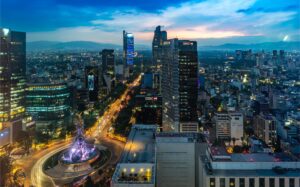
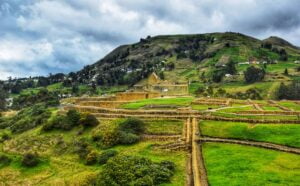
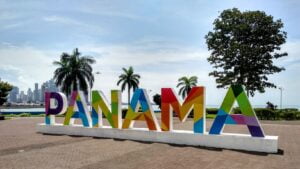
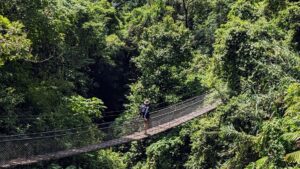
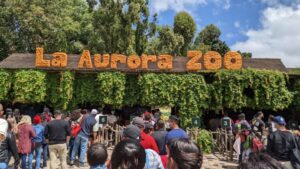

4 thoughts on “Exploring Izamal: Our Cheap Bus Trip to the Yellow City”
Beautiful!!
Absolutely! Such a pretty little town.
Wow, I want to go! Thank you for all of the very valuable information!!!!
Our pleasure! If you are already in Merida, it really is worth taking time to see.